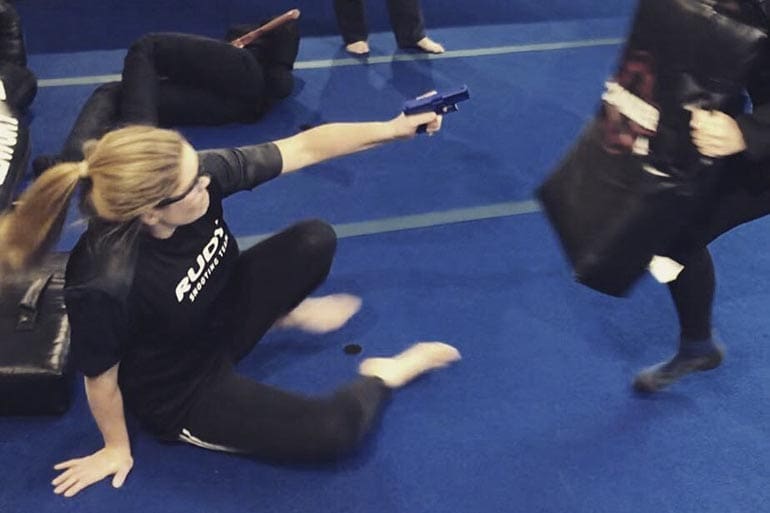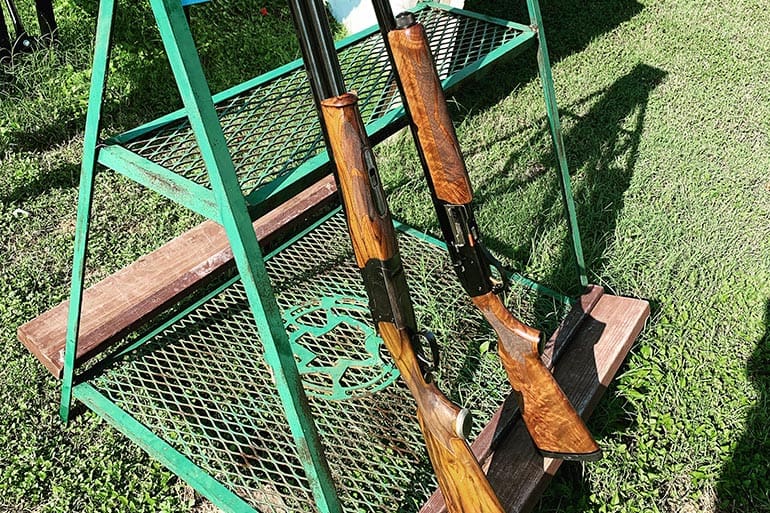I’ve reviewed a small number of training courses for TTAG here and there. I’ve been very blessed in the fact that I’ve somehow lucked into, been referred to, or found high quality trainers for all of my shooting and self defense training.
There have been no bad experiences at all so far, which not only keeps me developing as a shooter, but also reinforces my personal commitment to always growing and sharpening my skills.
That said, there is some training even among all the good ones that really stand out as changing my perspective in a significant way. One such training that I attended this spring was a course called Dirt and Steel, offered by Steve Miles of Alive Combatives in Salado, Texas, north of Austin.
Steve teaches knife, pistol, hand-to-hand and gunfighting, as well as a vehicle gunfighting course that I will be attending this coming October. He’s all about real skills practiced in a real time environment, drawing material from scenarios and videos from actual events where self defense was needed.
There are many good fighters who train with Steve, and his core student group is serious and dedicated, which makes for a positive and demanding environment when you attend any of his courses.
Dirt and Steel is offered to develop and test your skills in real life fighting situations where you or your opponent may have a gun or knife and are in a fight to see who can deploy their weapon first.
We used Nok training knives and plastic training pistols for the course. As students, we were given the chance to try out various ways of carrying our weapons to see how each would fare in terms of being able to actually draw and deploy it in close proximity.
There were also a variety of scenarios presented that we had to get out of, most of them involving being pinned to the ground in some way with an opponent on top of you trying to keep you from getting up.

Steve’s goal was to show us the real life challenges involved in deploying even a securely retained concealed weapon in such scenarios, as well as to teach and have us practice basic techniques for getting someone off of you so you can draw your weapon.
As Steve said,
The personal defense world is filled with the “tennis shoe” defense; i.e, just run away or “don’t be there.” But of course that’s just a copout because we don’t get to pick the circumstances of a violent attack. Escape may not always be an immediate option.”
This day-long course was completely eye-opening in terms of both the efficacy — or not — of various conceal carry systems for both a gun and a knife. Basically, once a fight goes to the ground, the only two carry methods that worked for me were under the bust in the front (my preferred) or, if I could get my opponent off me, appendix carry.
These were the only two carry positions that allowed for fast enough access for my weapon to be drawn and properly deployed.
I can safely say that one day of Dirt and Steel caused me to re-think absolutely everything about conceal carry and what really works for me. Before this course, I had not thought enough about how much I take for granted that deploying a weapon in a dangerous situation would happen with me standing up.
When I mentioned this to Steve, he had this to say:
What you experienced as far as Dirt and Steel changing your thoughts about conceal carry is the power of presenting the context first in training. Without that you are training blind and making decisions about how/what to carry based entirely on someone else’s opinion/experience. That works for some things, but as you know everyone’s physical and life circumstances are so different that there are very few “one size fits all/best practices” in personal defense. Context first (run-crawl-walk-run) is one of the key differences in what I do vs. everyone else (crawl-walk-run), and it makes a huge difference in rate of learning.
Steve taught me that you absolutely can’t assume that and people who attack women, in particular, will often try to get us on the ground assuming that our less-substantial upper body strength will mean we can’t fight them off.

The techniques he taught that day were simple enough to be learned by anyone and didn’t take that much practice to be effective.
I will say this, though: real fighting is exhausting. I don’t come from more than a minimal martial arts background, but even the experienced fighters were wearing down by the end of the day. It takes a lot of physicality to learn and practice these techniques over and over during the course of an entire day.
I also had the enormous pleasure of being partnered with, and having to escape from, the strong and ferocious Becca Spinks a handful of times throughout the day. I would say this: Don’t get into a fight with Becca. Just don’t. You’ll be better off for it.
I would highly recommend the Dirt and Steel course to all gun carriers interested in real time training with real world practice in close-range fighting and weapon deployment. It will probably change the way you think about personal defense.







